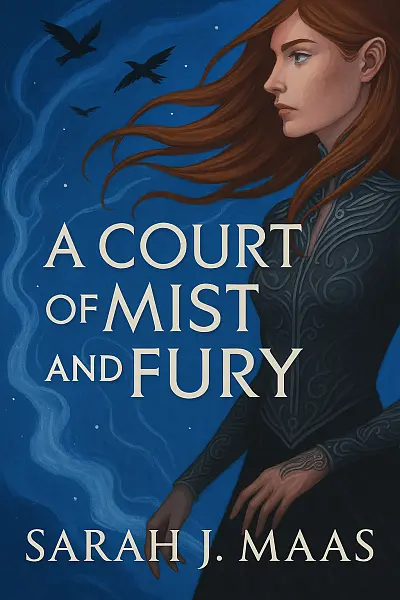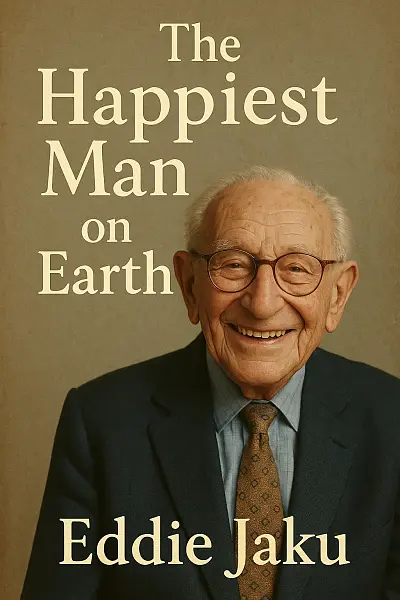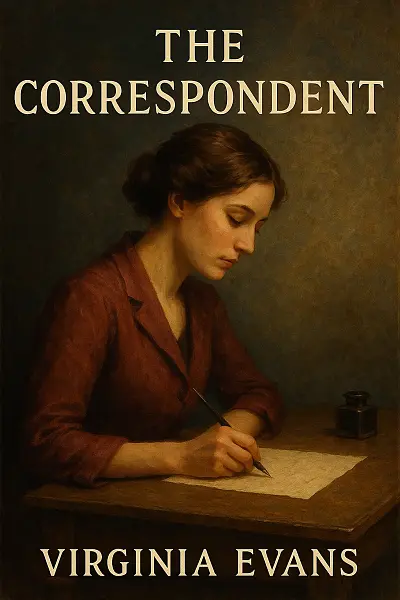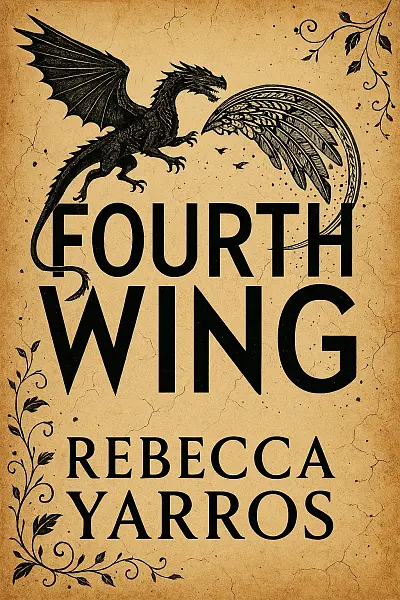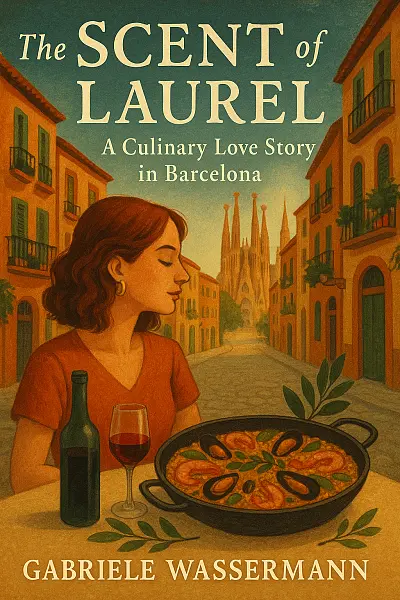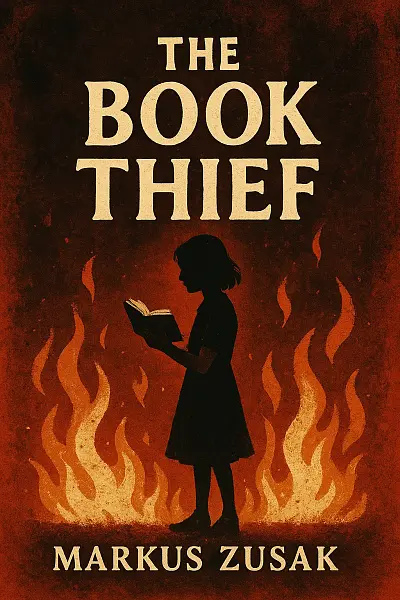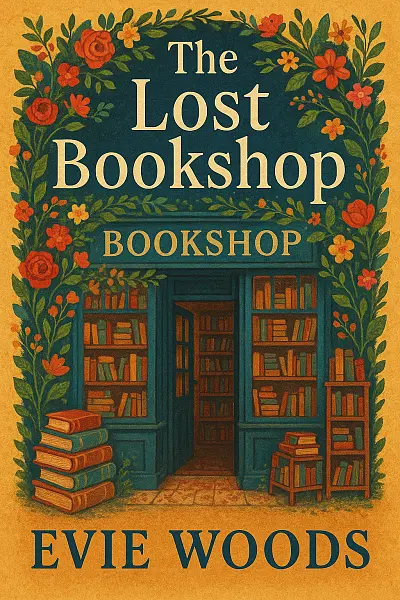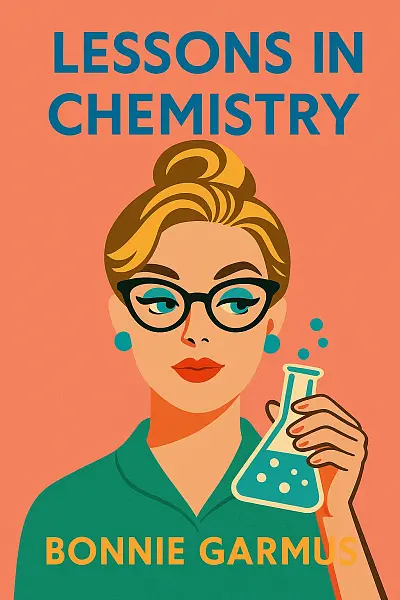
Lessons in Chemistry
by: Bonnie Garmus
Elizabeth Zott is a brilliant, fiercely independent chemist navigating the stifling, male-dominated labs of 1960s California. Driven to prove her worth, she dreams of scientific discovery but is dismissed and undermined at every turn because she’s a woman. When a chance encounter upends her career, Elizabeth is thrust into the spotlight as the host of a quirky TV cooking show, using her platform to sneak in real science and inspire other women.
As Elizabeth battles sexism, prejudice, and rigid expectations, she risks everything—her job, her reputation, and even her future—to chase equality and reshape society’s rules. Garmus delivers this story with sharp humor, lively dialogue, and plenty of heart, keeping you rooting for Elizabeth the whole way.
"“Change doesn’t come from waiting politely in line; it begins the moment you decide your life isn’t a formula someone else gets to solve.”"
Literary Analysis
Writing Style
Atmosphere
Garmus creates a sharp, witty ambiance that’s both inviting and quietly subversive. The setting bursts with mid-century detail, but there’s a modern edge—think postwar optimism layered with rebellious, unsung frustration. Daily life in 1960s California comes alive, both charming and constraining, especially for women who dream beyond their prescribed roles. Expect an atmosphere that’s cozy on the surface, gently masking deeper currents of longing, disappointment, and hope.
Prose Style
The writing is fresh, zippy, and unfussy, brimming with sly humor and clever observations. Garmus favors crisp sentences with a punchy rhythm, keeping things light while tackling weighty topics. Dialogue pops—characters speak with authenticity and spark—and the narrative voice has a dry wit that never feels mean-spirited. There’s an undercurrent of intelligence; science and culinary tidbits are woven in with an easy grace, never overwhelming or pedantic.
Pacing
Expect a breezy, lively pace that never lingers too long. The story zips along, alternating between moments of introspection and bursts of snappy action. Garmus manages reveals with a deft hand; plot threads are introduced with just enough time to breathe before accelerating into new territory. Rarely draggy, the novel moves like a well-timed sitcom—quick scene changes and punchlines abound, but there’s always a strong emotional throughline.
Characterization
The cast sparkles with personality, particularly the brilliantly stubborn Elizabeth Zott. Characters are sharply drawn but don’t stray into cartoonishness—flaws and quirks feel lived-in and real. Garmus uses subtle touches—gestures, offhand remarks, the routines of daily life—to flesh out her ensemble. Minor characters get their day in the sun, adding warmth and humor without stealing focus from the central journey.
Emotional Tone
It’s a delightful blend of heart and satire, managing pathos without ever tipping into melodrama. The tone balances frustration with resilience, dark realities with laugh-out-loud moments. You get the sense that Garmus is on the reader’s side—cheering for underdogs, lampooning nonsense, and guiding you through disappointments to moments of triumph and connection.
Overall Vibe
Pick up Lessons in Chemistry if you crave a smart, quick-witted read with a feminist pulse and a big heart. The style is energetic yet approachable—equal parts sly critique and heartfelt celebration of forging one’s own path.
Key Takeaways
-
Elizabeth Zott stirs up 1960s patriarchy, one beaker at a time
-
"Supper at Six"—cooking show becomes a secret chemistry class for housewives
-
Sharp, witty narration with a bite—think science meets satire
-
Rowing sessions morph into raw therapy, friendship, and revolution
-
Calvin and Elizabeth’s love story—brilliant, awkward, heartbreakingly real
-
Mad moments from Six-Thirty the dog—unexpected comic and emotional anchor
-
Righteous rage against misogyny, seasoned with laugh-out-loud wit

Defying the 1960s lab rules—one woman’s science sparks a revolution
Reader Insights
Who Should Read This
Hey, if you’re wondering if Lessons in Chemistry is your next read, here’s the scoop:
Who’s Going to Love This Book?
- Fans of quirky, smart heroines: If you love rooting for strong, unconventional women who totally refuse to fit into society’s neat little boxes, Elizabeth Zott is going to be your new favorite literary character.
- Historical fiction fans: There’s a super cool early-1960s vibe here (think retro labs, TV shows, and all those not-so-glam social norms). If you’re into seeing how women fought for space in a world stacked against them, this totally hits the mark.
- Readers who appreciate witty writing: The tone is sharp, satirical, and just the right kind of irreverent. Expect dry humor, clever dialogue, and a storyline that’s both thought-provoking and laugh-out-loud at times.
- Folks who love found family themes: There’s a real warmth in the relationships—with both humans and one hilarious dog—and a big heart at the center of all the chaos and chemistry.
- Those who enjoy a blend of genres: It’s part coming-of-age, part feminist lit, part contemporary-historical mashup—so if you like a dose of social commentary with your fiction, this will keep you hooked.
Who Might Want to Skip It?
- Action junkies or thriller seekers: There’s not a ton of big, explosive drama—so if you’re craving intense plot twists or edge-of-your-seat pacing, this story might feel a bit quiet.
- Readers who want subtlety in messaging: The girl power themes are served pretty boldly, sometimes almost on-the-nose, so if you’d rather have your social commentary dialed down or woven in with more subtlety, it might get a bit heavy-handed for your taste.
- Anyone who dislikes stories set in the past: The early-’60s setting is front and center, so if historical reads usually aren’t your thing, this one probably won’t win you over.
- People allergic to quirky characters: The humor and personalities are pretty offbeat—so if you prefer straight-laced, totally realistic casts, it could be a mismatch.
Bottom line: If you adore clever, character-driven stories with a punch of feminist fire and a sprinkle of humor, Lessons in Chemistry is an absolute treat. But if you’d rather avoid strong retro vibes, loud social messaging, or quirky storytelling, you might want to pass.
Story Overview
Ready to dive into the 1960s with a sharp, witty twist?
Lessons in Chemistry follows Elizabeth Zott, a fiercely intelligent chemist who unexpectedly becomes the star of a hit TV cooking show, challenging society’s outdated expectations along the way.
With a captivating blend of humor and heart, this novel serves up a story about perseverance, unconventional ambition, and finding your voice—perfect for readers who love strong female leads and a dash of mid-century flair.
Main Characters
-
Elizabeth Zott: The brilliant, fiercely independent chemist whose unconventional approach to life and science shakes up 1960s society. Her resilience and refusal to accept the status quo drive both her career and personal journey.
-
Calvin Evans: The eccentric, Nobel-nominated scientist who becomes Elizabeth’s romantic partner and intellectual equal. His support, quirks, and tragic arc profoundly shape Elizabeth’s life and ambitions.
-
Madeline “Mad” Zott: Elizabeth and Calvin’s precocious daughter, whose curiosity and outsider status mirror her mother’s. She brings warmth and humor to the story, exploring her place in a world that doesn’t quite understand her.
-
Harriet Sloane: Elizabeth’s loyal neighbor and friend, who offers emotional support and practical help. Her journey from subservient housewife to assertive individual adds depth and heart to the social fabric of the novel.
-
Walter Pine: The television producer who recognizes Elizabeth’s potential and gives her a platform with the cooking show “Supper at Six.” His transformation from skeptical boss to genuine believer in Elizabeth’s vision highlights the theme of societal change.
If You Loved This Book
Fans of Eleanor Oliphant Is Completely Fine by Gail Honeyman will find a kindred, quirky spirit in Elizabeth Zott, as both novels spotlight brilliantly unconventional women navigating social isolation, stubborn prejudice, and the baffling intricacies of human connection.
If The Marvelous Mrs. Maisel captivated you with its razor-sharp wit, mid-century setting, and tenacious female lead breaking boundaries in a man’s world, you’ll notice a delightful resonance in the way Lessons in Chemistry blends humor, feminist fire, and the vivid color of the 1960s.
In a different vein, Bonnie Garmus’s approach to scientific ambition and gender politics shares the simmering undercurrents of Where’d You Go, Bernadette by Maria Semple—both novels bristle with satirical bite and irreverent charm, making serious points while always staying entertaining and emotionally real.
There’s this electric thread running through all these works—a refusal to play by the rules, a hunger to reshape the world—and Lessons in Chemistry wears that defiance with a wit and warmth that hooks you from the very first page.
Expert Review
What happens when intellect becomes an act of defiance? Lessons in Chemistry by Bonnie Garmus asks this question with bracing candor, as it plunges readers into the mid-century maelstrom of gender roles, class boundaries, and the subversive power of knowledge. At its core, the novel dares us to imagine how quietly revolutionary a woman’s refusal to shrink can be—and whether, in a world designed to minimize her, brains might be her boldest weapon.
Garmus’s prose is a standout—fresh, witty, and quietly incisive. The writing manages that rare trick of being both accessible and slyly complex, layering humor beneath anger, and tenderness beneath sharp social critique. Dialogue is crisp and authentic, never weighed down by exposition, and narrative perspective is handled with a deft lightness: moving between personal reflection and social observation without losing its momentum. The pacing, though deliberate, smartly echoes Elizabeth’s slow but steady push against societal inertia—at times almost frustrating, but ultimately effective in mirroring the protagonist’s own journey. Stylistic touches—like the quietly recurring motifs around chemistry and cooking—serve as clever metaphors without ever feeling trite or labored. There’s a television-ready quality to some scenes—snappy, visual, and packed with rhythm—but depth is never sacrificed for entertainment.
At its heart, the novel is a fierce, often funny meditation on systemic sexism and the weaponization of credentials. Garmus uses Elizabeth’s struggle in the scientific community not just to illuminate the era’s toxic gatekeeping, but to universalize questions about who gets to take up space—in the lab, at home, and in society at large. The story’s critique extends to class and capitalism, quietly exposing how access to education and opportunity is rationed along lines of both gender and wealth. The theme of education as salvation is especially resonant: Garmus argues—without sermonizing—that knowledge can destabilize the status quo and act as a form of resistance. Personal relationships, parenting, and even domestic rituals become battlegrounds for dignity and autonomy, with the kitchen serving as both a literal and metaphorical laboratory for reinvention. In this, Lessons in Chemistry feels intimately relevant, its unspoken questions about modern equity painfully evergreen.
Placed alongside recent feminist fiction—think Meg Wolitzer’s The Female Persuasion or Lauren Groff’s Matrix—Garmus’s debut is both more irreverent and more plot-driven. It joins a wave of contemporary novels intent on excavating the legacies of mid-century misogyny, yet stands out for its blend of genuine warmth and biting satire. While it echoes works like The Bell Jar in its depiction of systemic exclusion, Garmus filters rage through optimism—a rare, optimistic refusal to cede either intellect or hope.
While the narrative is sometimes overly schematic—secondary characters may border on caricature, and coincidences occasionally strain believability—the emotional payoff is sincere, and the clarity of its vision, invigorating. Ultimately, Garmus has delivered a buoyant, smart-hearted debut: imperfect, perhaps, but undeniably vital for readers hungry for stories of resilience, radical intellect, and unapologetic women.
Community Reviews
That scene where Elizabeth sets up her chemistry lab in the kitchen? I swear I could smell the vinegar and ambition. She’s pure brilliance with a spatula and a beaker. If you missed it, go back and read it again.
Elizabeth Zott is still rattling around my head. I thought I was reading about science and suddenly I’m rethinking the entire patriarchy. That dog? I’d die for him. Unexpected, sharp, unforgettable.
I didn’t think a scientist-turned-cooking-show-host could upend my week, but Elizabeth Zott made me question my career choices and possibly my lunch. The dog’s POV? Genius. I was up until 3am, no regrets.
I honestly could not get Elizabeth Zott out of my head for days. Her fierce intellect, stubbornness, and utter refusal to back down from a broken system had me cheering and exhausted at the same time. Lessons in Chemistry is electric.
I picked up Lessons in Chemistry thinking it’d be a quick read but found myself awake at 2am, obsessed with Elizabeth Zott’s relentless determination. Seriously, I couldn’t put it down until I knew what happened next.
Cultural Context & Discussion
Local Perspective
Lessons in Chemistry by Bonnie Garmus really strikes a chord with readers in the U.S., especially given the country’s history with feminist movements and the ongoing push for gender equality.
-
The novel’s 1960s setting resonates with the American civil rights and second-wave feminism eras—think trailblazers like Gloria Steinem or the fight for Title IX. Elizabeth Zott’s struggles with misogyny and workplace discrimination echo the real-life challenges many American women faced (and sadly, still face).
-
U.S. values around individualism, self-determination, and breaking the mold align with Zott’s relentless pursuit of her own path, making her instantly relatable. But the book also cleverly pokes at the tension between “traditional” American family ideals and modern aspirations—something that’s still hotly debated.
-
The story’s critique of media’s influence—especially its manipulation of women’s roles—hits hard here, where TV cooking shows and pop culture shape everyday norms.
-
Stylistically, the mix of wit, social critique, and a quirky underdog protagonist fits well alongside modern American favorites like Where’d You Go, Bernadette and classics like Fried Green Tomatoes. However, Garmus also challenges the neat, “happy ending” tradition in American literary comfort reads by leaving some questions messy and unresolved, offering realism that stings just right.
Points of Discussion
Notable Achievement:
Lessons in Chemistry by Bonnie Garmus has become a massive bestseller, selling over a million copies worldwide and inspiring a popular Apple TV+ adaptation, resonating with readers for its blend of sharp wit, feminist themes, and unconventional heroine.
